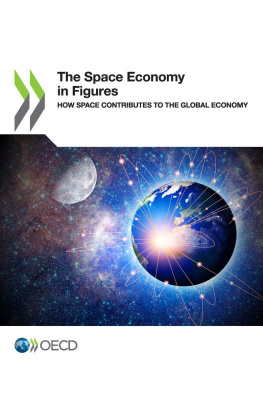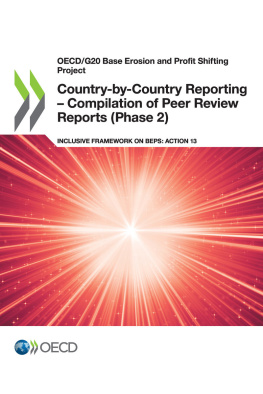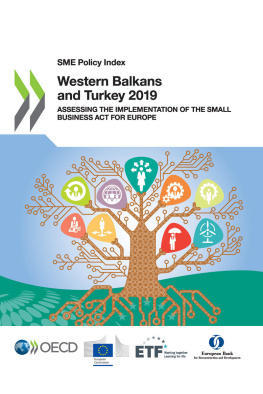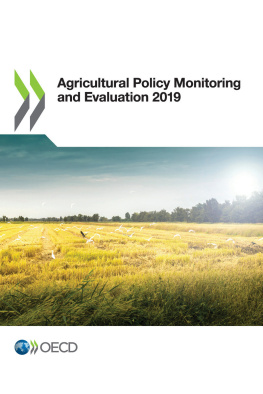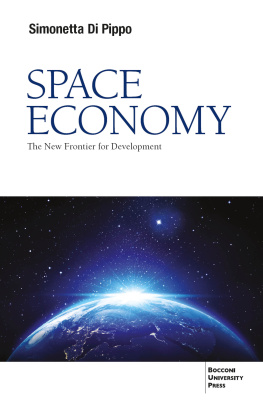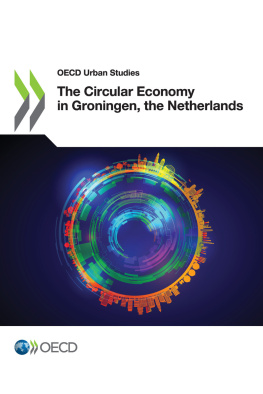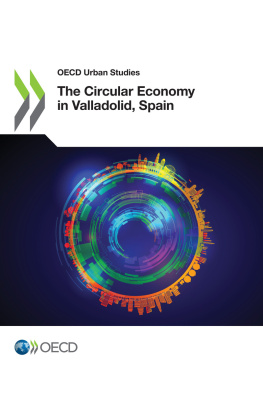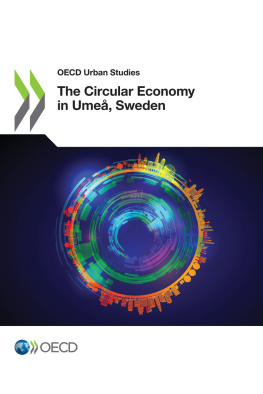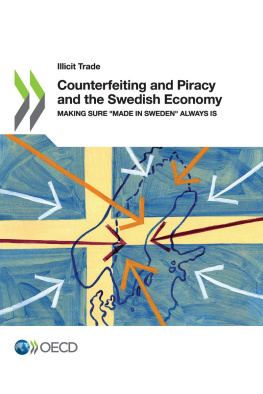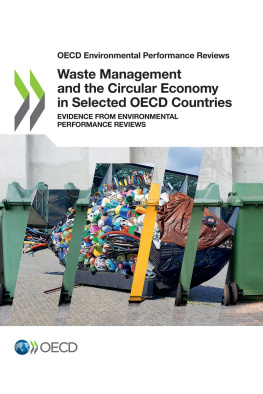OECD - The Space Economy in Figures
Here you can read online OECD - The Space Economy in Figures full text of the book (entire story) in english for free. Download pdf and epub, get meaning, cover and reviews about this ebook. year: 2019, publisher: OECD Publishing, genre: Politics. Description of the work, (preface) as well as reviews are available. Best literature library LitArk.com created for fans of good reading and offers a wide selection of genres:
Romance novel
Science fiction
Adventure
Detective
Science
History
Home and family
Prose
Art
Politics
Computer
Non-fiction
Religion
Business
Children
Humor
Choose a favorite category and find really read worthwhile books. Enjoy immersion in the world of imagination, feel the emotions of the characters or learn something new for yourself, make an fascinating discovery.
The Space Economy in Figures: summary, description and annotation
We offer to read an annotation, description, summary or preface (depends on what the author of the book "The Space Economy in Figures" wrote himself). If you haven't found the necessary information about the book — write in the comments, we will try to find it.
OECD: author's other books
Who wrote The Space Economy in Figures? Find out the surname, the name of the author of the book and a list of all author's works by series.
The Space Economy in Figures — read online for free the complete book (whole text) full work
Below is the text of the book, divided by pages. System saving the place of the last page read, allows you to conveniently read the book "The Space Economy in Figures" online for free, without having to search again every time where you left off. Put a bookmark, and you can go to the page where you finished reading at any time.
Font size:
Interval:
Bookmark:
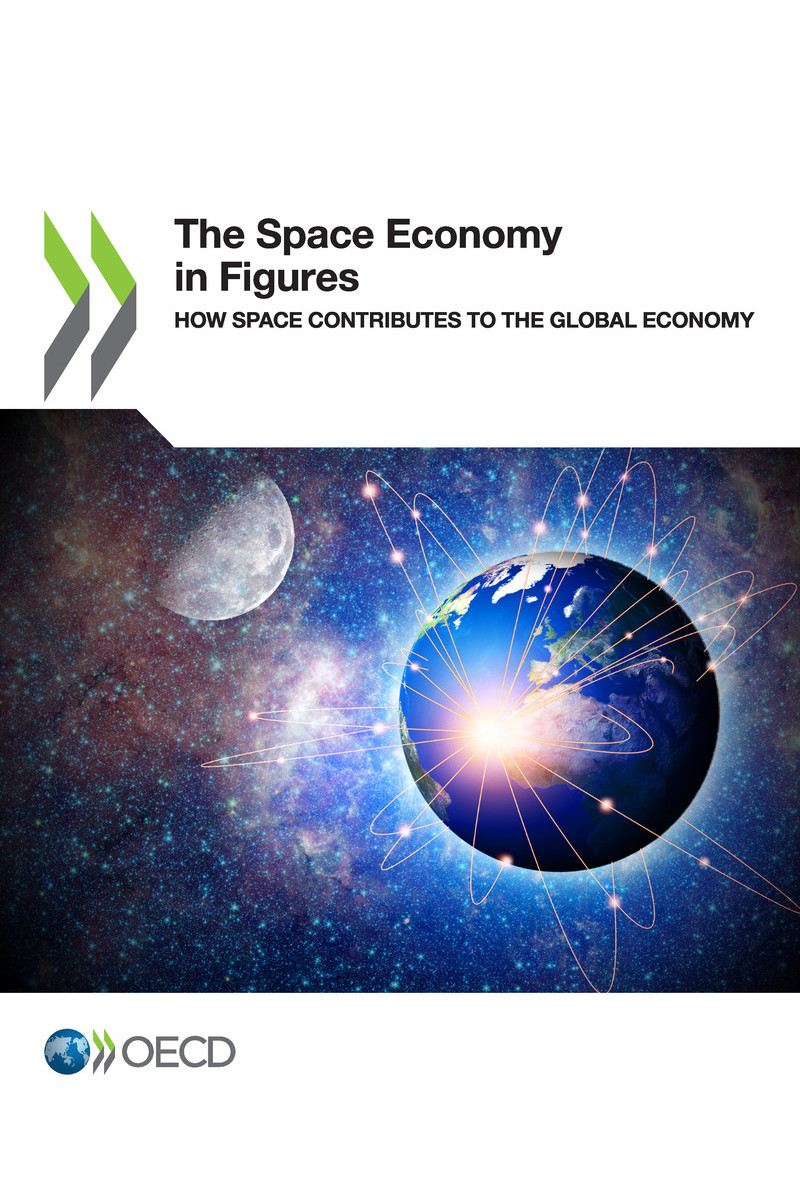
OECD (2019), The Space Economy in Figures: How Space Contributes to the Global Economy , OECD Publishing, Paris, https://doi.org/10.1787/c5996201-en .
The OECD publication The Space Economy in Figures: How Space Contributes to the Global Economy provides an original overview of the global space sector.
This report is the fourth in a series of OECD publications dedicated to the space economy (previous reports were published in 2007, 2011 and 2014). In a little more than a decade, the space sector has experienced considerable development throughout the world, with greater impacts on the larger economy boosted by both globalisation and digitalisation. It is also on the verge of significant changes, with new commercial space systems from satellite broadband constellations to spaceflight becoming operational.
This latest publication documents these trends using original indicators from public and private data sources, highlighting the growing importance of space activities for the economy, social wellbeing and science. Furthermore, it provides lessons-learned for policymakers in how space technologies can be linked to socio-economic impacts. As well as updating existing OECD indicators, this new edition showcases newly-established OECD indicators, leveraging close co-operation across relevant policy areas in the OECD and with the ever-growing space community. These indicators include measures of space projects and official development assistance, bibliometric data used as proxies for innovation, new broadband indicators, and new datasets that contribute to extended country profiles.
The report includes seven chapters covering major trends in the space sector plus country-specific profiles of recent developments. The chapters are:
The ongoing transformation of the global space sector (). This chapter provides an introduction to the transformation of the global space sector from three different angles: reviewing institutional and private investment trends, examining evolutions of the space economy, confronting current hype and market realities, and finally focusing on global space innovation activities (using proxies such as bibliometrics and patents).
The returns from space investments () examines three different approaches to how space investments can be linked to socio-economic impacts. An assessment of the types of benefits derived from space programmes are first provided, based on an international literature review. In addition, new OECD indicators on the growing role of space applications in official development assistance projects (ODA) are presented for the first time. Finally, the growing relevance of technology transfers and commercialisation from the space sector to the wider economy is highlighted.
Remedying the gender gap in a dynamic space sector () provides a brief overview of employment in the space sector. It also presents one of the first exercises at the international level to present indicators to evaluate the space sector from a gender perspective. It provides exploratory indicators on government space agencies, higher education institutions and the private sector as well as female tertiary education enrolment and graduation statistics in space-related fields.
Digital (r)evolution in manufacturing and in the production of space systems () examines how digitalisation is affecting the space sector, with a focus on key developments in satellites and space launchers. It also identifies possible emerging space activities (space tourism, in-orbit servicing, space mining and resources extraction).
Space exploration and the pursuit of scientific knowledge () reviews recent developments in space exploration and space sciences, the progress made in human spaceflight missions, as well as the growing challenges posed by space debris. It presents some key missions planned for the next decade and highlights specific trends, such as the rise of citizen science and crowdsourcing.
A new satellite communications environment () briefly reviews the state of play in satellite communications. For decades, satellite communications have been the fastest growing commercial space market, driving innovation and growth along the space sectors value chains. New technologies, business models and consumer behaviours are disrupting markets (e.g. television, backhaul, broadband and internet of things), with impacts throughout existing value chains. In addition, specific policy issues, particularly related to spectrum allocations, may bring further uncertainties.
Bringing space down to earth (). The last chapter focuses on the growing volume and variety of satellite data and signals, and how they affect downstream applications such as weather and climate monitoring, earth observation and satellite positioning, navigation and timing. Building on advances in analytics and machine learning, ecosystems of innovative start-ups are using satellite data and signals in original ways and developing brand new products and services.
Finally extended country profiles are provided with new indicators, featuring members of the OECD Space Forum, as well as selected invited economies.
This publication is based on research and analytical work conducted by the OECD Space Forum Secretariat in the Science and Technology Policy Division, within the Directorate for Science, Technology and Innovation (STI). These activities fit into the broader programme of work of the OECD Committee for Scientific and Technological Policy (CSTP), under the direction of Dominique Guellec. The publication was prepared under the guidance of Claire Jolly, Head of Unit, with support in conducting research and analysis from Marit Undseth, Policy Analyst, Mattia Olivari, Economist, and events organisation and editing from Chrystyna Harpluk, Project Coordinator. Editorial assistance was provided by Angela Gosmann, STI Publications, and Jennifer Allain, Editor. Sylvain Fraccola, also from STI, provided support with country profile graphics.
Font size:
Interval:
Bookmark:
Similar books «The Space Economy in Figures»
Look at similar books to The Space Economy in Figures. We have selected literature similar in name and meaning in the hope of providing readers with more options to find new, interesting, not yet read works.
Discussion, reviews of the book The Space Economy in Figures and just readers' own opinions. Leave your comments, write what you think about the work, its meaning or the main characters. Specify what exactly you liked and what you didn't like, and why you think so.

